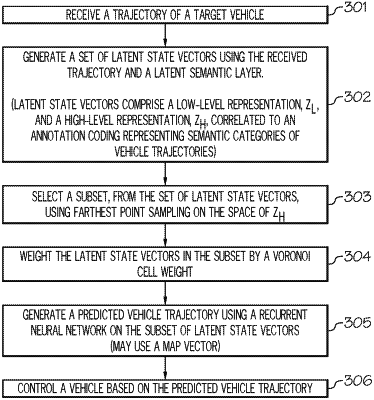| CPC B60W 60/0011 (2020.02) [B60W 60/001 (2020.02); G06F 18/2148 (2023.01); G06N 3/08 (2013.01); G06V 10/82 (2022.01); G06V 20/41 (2022.01); G06V 20/52 (2022.01); G06V 20/58 (2022.01); B60W 2420/403 (2013.01)] | 20 Claims |

|
1. A method for generating a predicted vehicle trajectory comprising:
receiving a trajectory vector of a target vehicle;
generating a set of latent state vectors using the received trajectory vector and an artificial neural network, wherein the latent state vectors each comprise a high-level representation, ZH, correlated to an annotation coding representing semantic categories of vehicle trajectories;
selecting a subset, from the set of latent state vectors, using farthest point sampling;
generating a predicted vehicle trajectory based on the subset of latent state vectors; and
controlling a vehicle based on the predicted vehicle trajectory.
|